
Test Your RV Safety IQ
Summer is here, RV season is in full swing, and the campgrounds are full. Depending on where you point your rig, it can seem like half the country has busted out for some R&R.
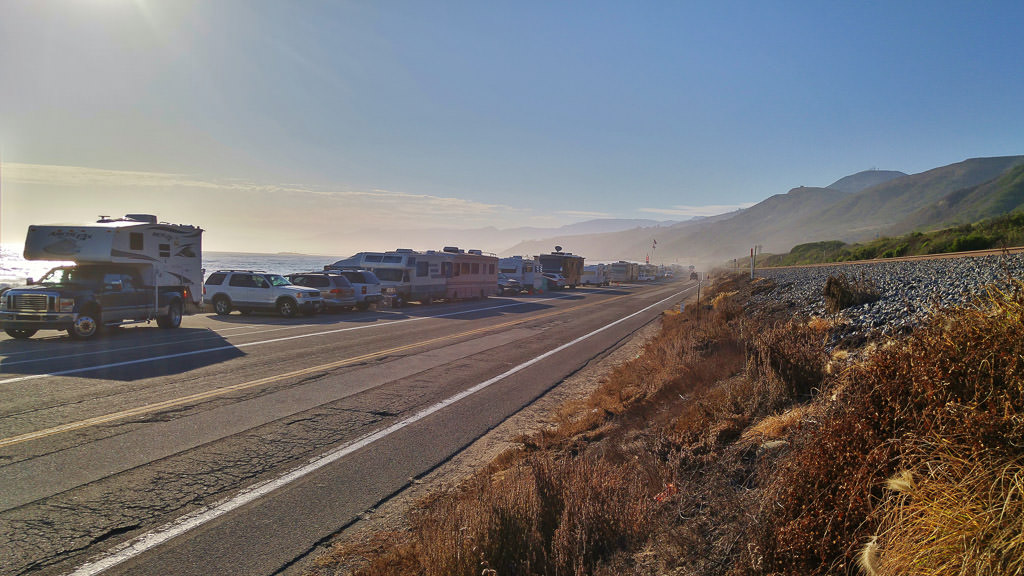
But for the thousands of RV trips that end well, there are always a few of them that don't. Each year, some RVers fall victim to accidents and injuries, many of which could be prevented. In the interest of keeping you from becoming a statistic, I've prepared a short RV safety quiz. You'll find the answers at the end.
1. In an RV, "Hot Skin" refers to:
a. Heat induced and potentially dangerous delamination of RV exterior walls.
b. When the outside of an RV becomes electrically charged.
c. A scalding hazard presented by a malfunctioning water heater.
d. Excess heat build-up on the controls (steering wheel, knobs, etc) of an RV.
2. If you experience a blowout in one of your motorhome's front tires, you should:
a. Brake firmly and quickly to bring the rig to a stop as rapidly as possible.
b. Take your foot off the gas and coast into a stop slowly.
c. Step on the gas to maintain control and stop when safe.
d. Have your co-pilot move to the other side of the coach to keep the flat tire off the ground.
3. Before hooking up a grill to your RV's propane connection, it's most important to:
a. Apply Teflon tape to the quick connect.
b. Assemble a combination of elbows, plugs, adapters and fittings that will work.
c. Verify if the pressure of the connection and the pressure of the grill are compatible.
d. Marinate what you plan to grill. (Because hey, nobody likes dry food.)
4. You should never load your vehicle over its GVWR. The GVWR includes (but is not limited to):
a. The weight of any liquids in holding tanks.
b. The weight of a towed vehicle.
c. Passengers and Cargo.
d. All of the above.
e. A and C
5. A carbon monoxide (CO) detector should be installed in your RV:
a. High -- because carbon monoxide is lighter than air.
b. Low -- because carbon monoxide is heavier than air.
c. Co-located with the propane detector.
d. Not at all, as carbon monoxide risk is extremely low in an RV.
Answers:
1. In an RV, "Hot Skin" refers to:
b. When the outside of an RV becomes electrically charged.
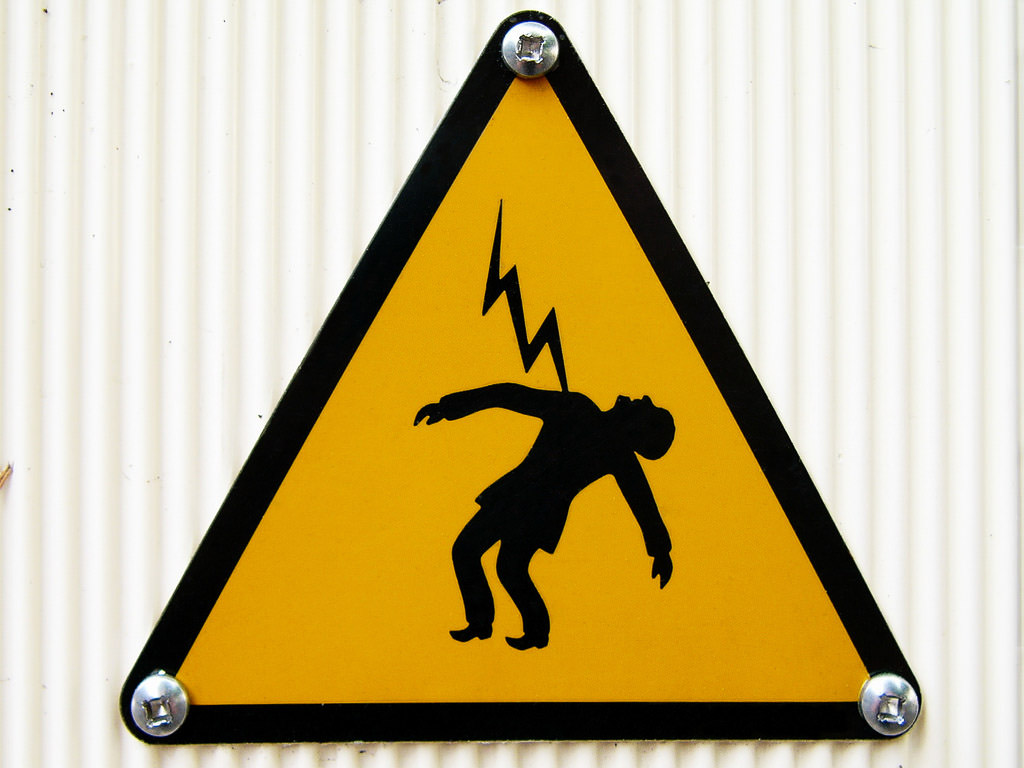
I actually experienced this condition myself once. In an older RV, I was hooking up the cable connection to the RV parks cable input. When I touched the park pedestal, I got a definite "ZING." This was an older class B motorhome with a metal body, and I eventually traced the problem to a short in the shore power input. But you don't have to have a full metal-bodied RV to experience Hot Skin. Metal steps, screen doors, and other parts of your RV can become energized and potentially dangerous.
Basically, if the electrical potential of your rig is greater than ground, you've got a problem. Often times, this is caused by a mis-wiring job, which crosses the neutral and hot wires. The best way to test for Hot Skin is with a multimeter, if you travel with one. You can read more about Hot Skin here.
2. If you experience a blowout in one of your motorhome's front tires, you should:
c. Step on the gas to maintain control and stop when safe.
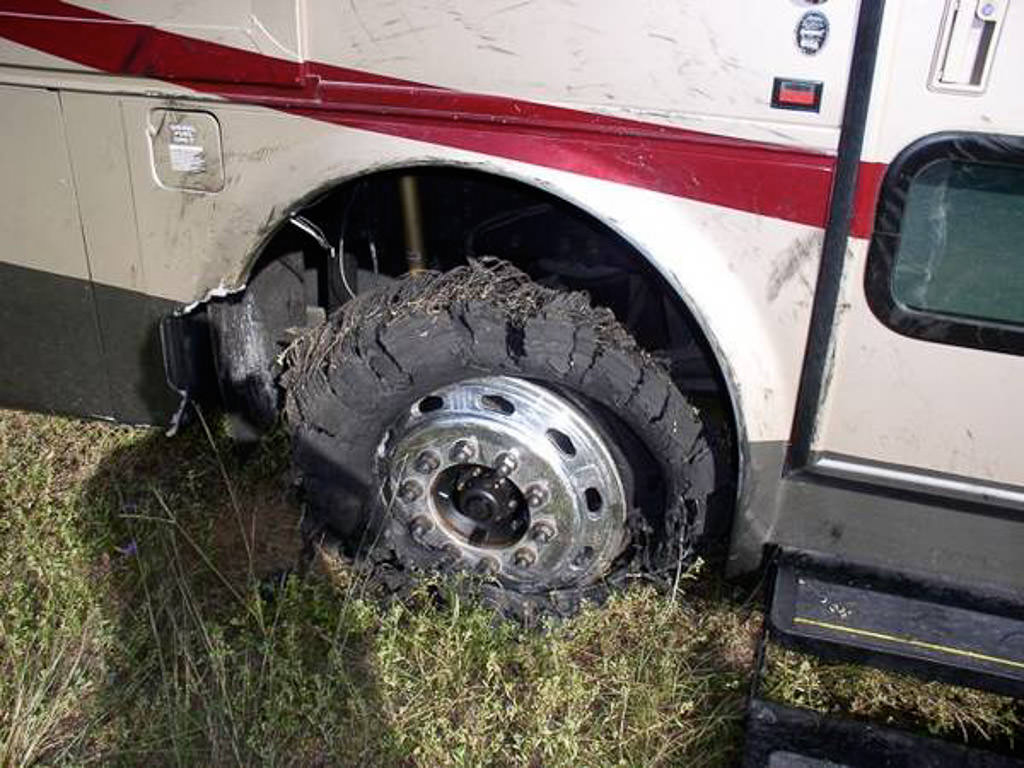
This one is tough to grasp because your intuition and instinct would be to stop the vehicle as quickly as possible. But it turns out, stabbing at the brake pedal is just about the worst thing you can do. I won't bore you with the physics. But in the end, it comes down to counteracting the forces that are trying to pull your motorhome to the side. The best way to do that is by exerting an even greater force that's under your control.
The idea here is not that you start accelerating wildly, but that you accelerate long enough to regain control of the vehicle, after which you can make a slow and controlled stop on your own terms. You can see an excellent, if somewhat dated, video on the topic here.
Fortunately, physics doesn't change much, and the information is just as valid as ever.
Also interesting is that the procedures for both FRONT and BACK wheel blowouts are exactly the same!
3. Before hooking up a grill to your RV's propane connection, it's most important to:
c. Verify if the pressure of the connection and the pressure of the grill are compatible.
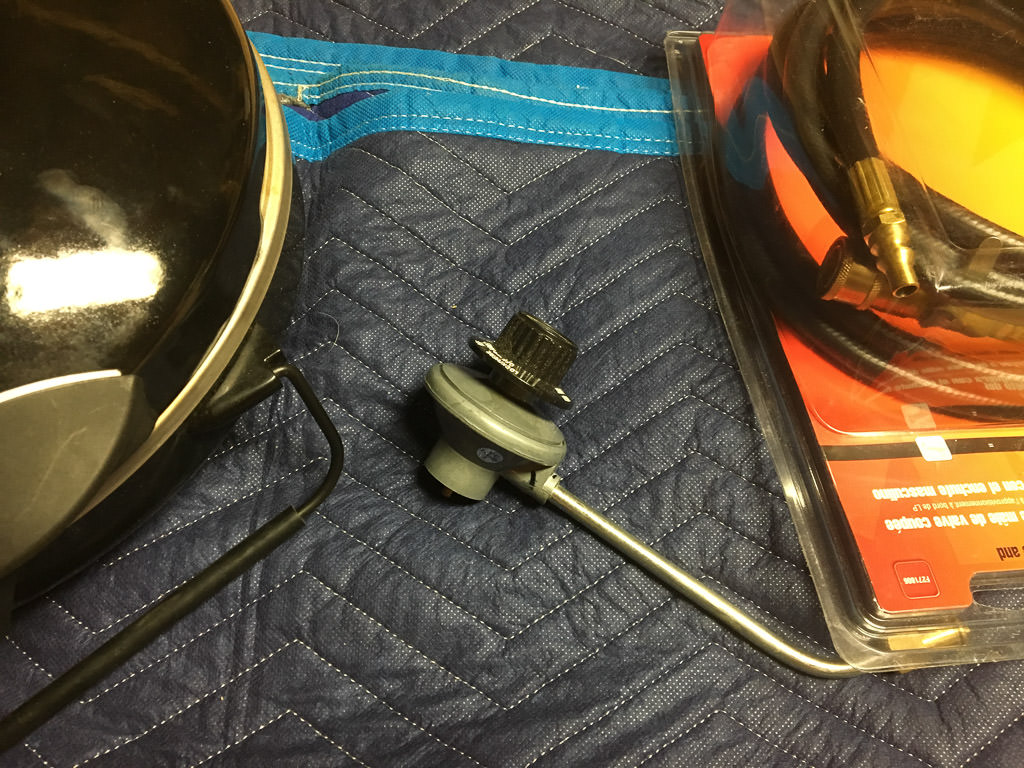
If your RV has an exterior propane connection for hooking up a grill, that can be an awesome never-have-to-carry-those-little-green-bottles-of-propane-again accessory. But it can also be a source of potential problems if you don't get the connections just right.
Besides the mechanical part of the connection (which is important and should be leak-free) there's the matter of propane pressures. You see, the propane in your RV's tank is likely held at pressures of 250 psi or greater. Your rig will have a propane regulator to bring the pressure of the vapor down from this high number to the 11 inches of water (about 0.4 psi) required by your appliances. That's a good thing, and you want that regulator working for you. I can't say for certain because I don't know your rig, but I'd bet that most rigs with an external propane connector have that connector on the low pressure side of the regulator.
The trouble is, most portable propane grills ALSO come with a regulator, and you don't want the output of one regulator feeding the input of another. If you "double regulate" your propane, you could wind up with an insufficient gas supply to your grill, incomplete combustion, or a grill that goes out when you close the cover and fills the grill with propane.
None of those are things you want. So, before you buy a grill, verify what pressure your propane connection is running, and get a grill that will accept that input.
4. You should never load your vehicle over its GVWR. The GVWR includes (but is not limited to):
e. A and C (The weight of any liquids in holding tanks, as well as passengers and cargo).
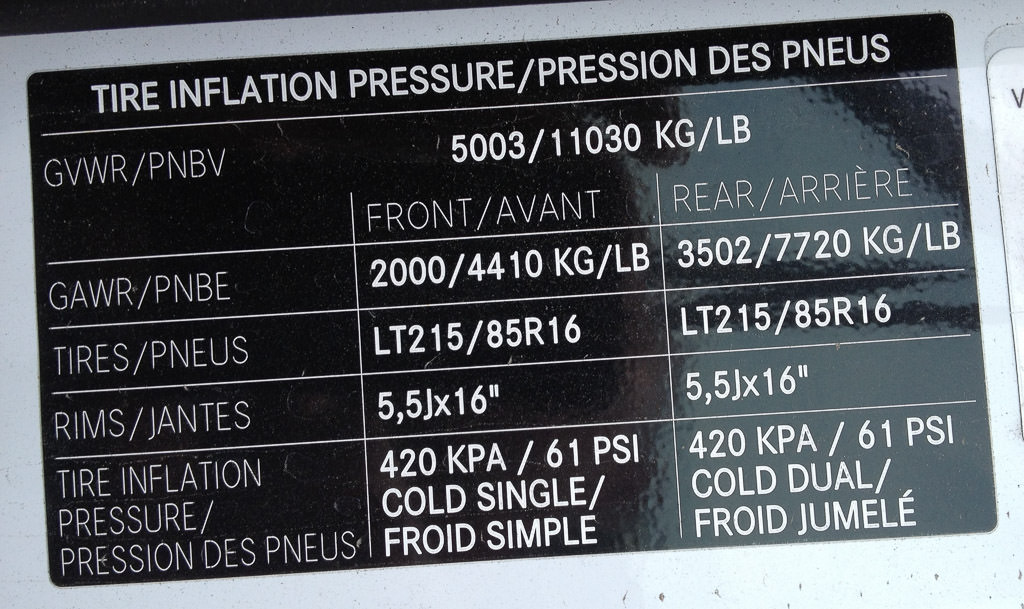
Overloading a motorhome is not something you want to mess with. To make sure you don't do that, the manufacturer will put a plate on your vehicle (usually inside the driver's door) that lists the weight capacities of the vehicle. This one is important, so to make sure I get it right, I'm going to quote the definition from the RV Safety Education Foundation:
"GVWR: The maximum allowable weight of a fully loaded vehicle, including liquids, passengers, cargo, and the tongue weight of any towed vehicle."
This means that ANYTHING AND EVERYTHING you put in your vehicle -- combined with the weight of the vehicle itself, can't exceed that number. And I do mean everything: The fresh water you're carrying; the black tank you forgot to dump; the food in your fridge; your pet; the fuel in your tank; and the burrito you just picked up at the gas station. It all counts.
The best and most accurate method to determine how close you are to your GVWR is to weigh your vehicle after you've got everything loaded up for a trip. That's the only method I trust. You'll typically do this at a truck stop. And while that's not always terribly convenient, and it adds a few minutes to your trip, staying under that GVWR number could really save your bacon in an emergency.
The other interesting point here is that if you tow, the tongue weight of your towed vehicle counts as cargo!
5. A carbon monoxide (CO) detector should be installed in your RV:
a. High -- because carbon monoxide is lighter than air.
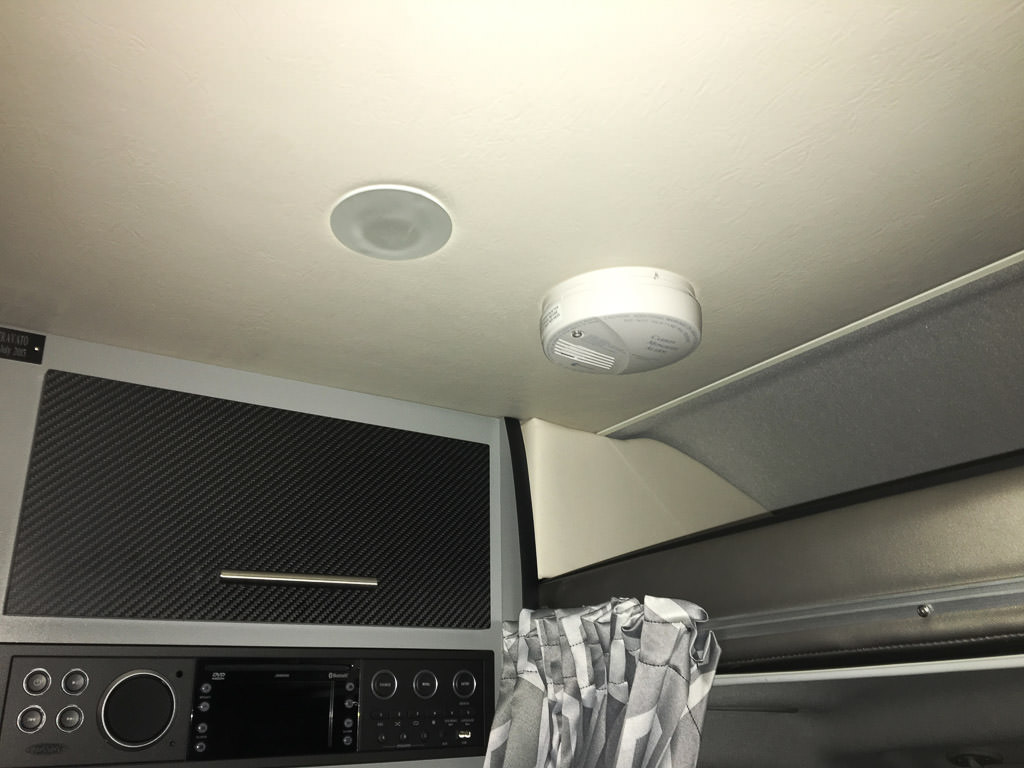
Fact: Carbon monoxide is slightly lighter than air. This is the opposite of propane, which is heavier than air. So, while we've all seen the propane leak detectors lurking near the floors of our rigs, you shouldn't be looking in that same space for a carbon monoxide detector.
Also unlike propane, carbon monoxide is colorless and odorless. You won't detect it on your own, so you need a detector. Our last RV didn't have a carbon monoxide detector, so I installed one, and mounted it on the ceiling. Our current Travato came with one.
You need a CO detector in your rig if you have any combustion appliances. Stovetops, heaters, water heaters, absorption refrigerators, basically anything with a flame that can generate carbon monoxide.
And if you're going to use alternative heaters, such as a catalytic heater, inside your rig then you really need to make sure your CO detector is working properly. Personally, I don't recommend using fuel-burning (and CO-producing) appliances in an enclosed space while you're sleeping, but some folks insist they're safe. If you're going to use one, then please make sure you have a carbon monoxide detector as a safety measure.
And there you have it. How did you do? If you got a perfect score, why not add a safety question (and answer) of your own down in the comments?
And if you didn't get a perfect score, don't worry. The intent here wasn't to scare anyone, but just to inform. If you missed a question, or were just curious to know more, now you have some late-night Googling to do! RVing, like most anything else in life, comes with a few risks to balance out the rewards. But with a little knowledge, you can mitigate those risks. And when you've done that, all that's left are the rewards. Happy (and safe) RVing, all!
Comments
Comments on this post are moderated, so they will not appear instantly. All relevant questions and helpful notes are welcome! If you have a service inquiry or question related to your RV, please reach out to the customer care team directly using the phone numbers or contact form on this page .